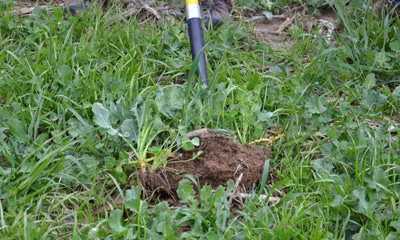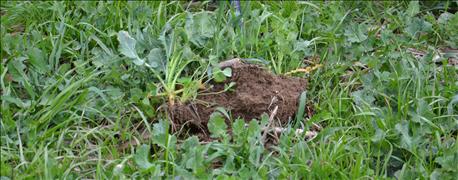
People continue talking about the benefits of cover crops. However, it’s difficult to put a value on those benefits. It’s much easier to identify the costs, often $20 to $35 per acre or more. If your cash flow is tight due to low crop prices, is this the year to try cover crops, or to expand acreage?
The Profit Planners panel addresses this question. Panel members are David Erickson, farmer, Altona, Ill.; Mark Evans, Purdue Extension director, Putnam County, Ind.; Steve Myers, farm manager, Busey Ag Resources, Leroy, Ill.; and Chris Parker, farm management specialist, Morgan County, Ind.

TRY COVER CROPS: Imagine this kind of cover crop growth on your farm in the spring. This was the first time a cover crop was grown on this field.
Erickson: I agree that you should try cover crops on a limited basis before making it a practice on all of your acres. Fields with higher erodibility factors, lower organic matter and lower crop production history have the best chance of return to expense of the practice.
Evans: Seeding cover crops, like minimizing tillage, is another step in building soil quality. If you’re already no-tilling, cover crops make a lot of sense to move forward with increasing soil health. It would be good to try at least a small acreage to learn and determine benefits without covering the entire operation.
Meyer: If you’re truly interested in cover crops, start small now. While the overall impact, positive or negative, will be limited, it will give you a taste, and build understanding and experience. Talk to someone who has knowledge about any "tricks" that can make the cost of attempts less painful, while prioritizing for your farm where you will get the most bang for your buck.
Parker: There are cost-share programs available with Natural Resources Conservation Service and Environmental Quality Incentives Program monies. See if you can avail yourself of this to try cover crops on some acreage at minimal cost. This will give you firsthand experience with cover crops. But realize that research shows that cover crop benefits are cumulative over time. That means you won’t see all the benefits possible in just one season. Talking with neighboring farmers who have had firsthand experience should help.
Erickson: Try to rent machinery for seeding purposes if you don’t have your own. Get the advice of area farmers who have tried cover crops. The Illinois Council on Best Management Practices is also a good source for advice. Visit illinoiscbmp.org.
Search the Midwest Cover Crops Council website and you’ll likely find that cover crops can be implemented at the low end of the $20-to-$35-per-acre spectrum. If you’re not no-tilling, start working to minimize tillage before worrying about cover crops. That will improve your economics.
Summing up: Each panelist believes you ought to try cover crops this year if you haven’t tried them yet. One notes that it’s the next step after no-tilling. If you’re not no-tilling, move toward that practice before trying cover crops. Cost-share help may be available so you can try cover crops. Realize that it will take more than one season to gauge all possible benefits of cover crops.

About the Author(s)
You May Also Like




